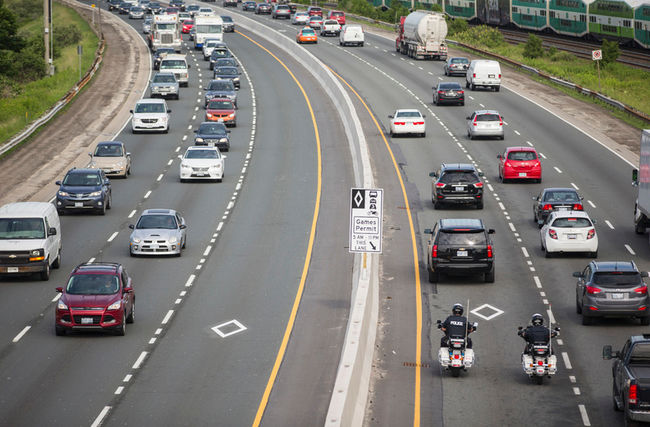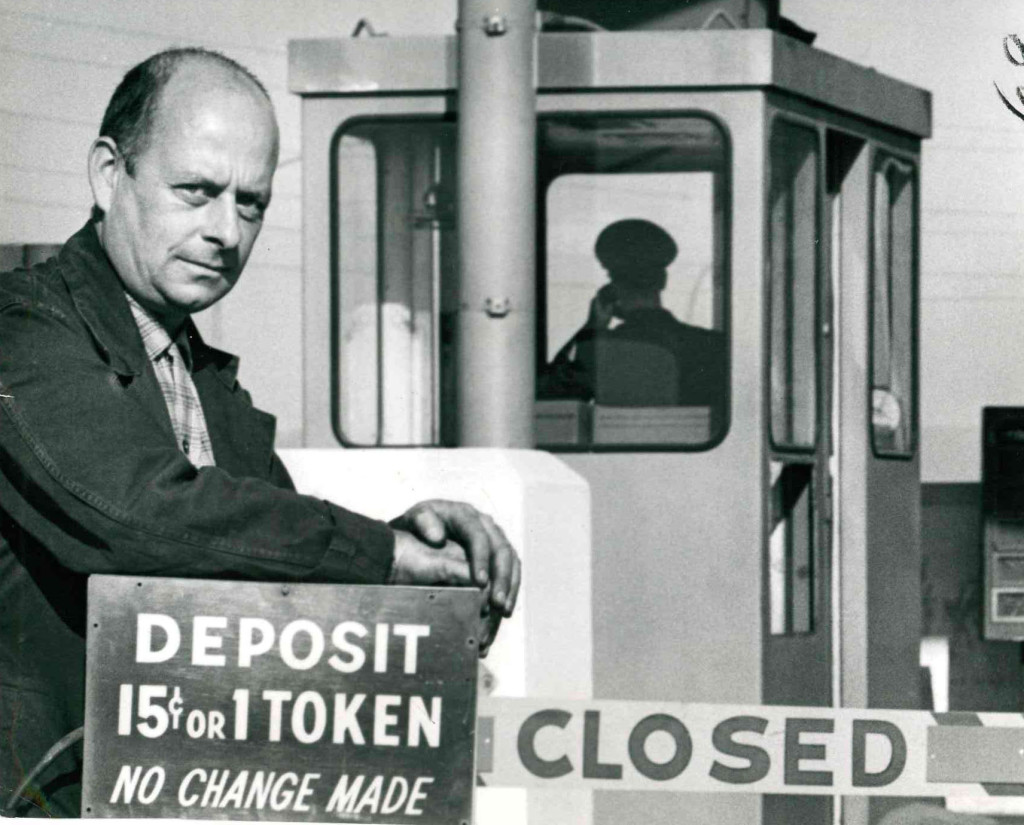 By Pepper Parr
By Pepper Parr
July 27, 2015
BURLINGTON, ON
On Tuesday we get back the use of the HOV traffic lanes on the QEW. Then we learn that the province is looking at the idea of turning those lanes into a stretch of road they can collect tolls on.
Looks like that is going to become our PanAm Games legacy from the province.

Will drivers pay a toll to use a special lane? Those making the big bucks will – and of course the politicians who will get that feature as a perk. The HOV lanes didn’t always get a lot of traffic during the Pan Am games
The two-occupant requirement, explains the province, will let more carpoolers and families access the lanes, and help Parapan Am Games athletes and officials get to and from competitions, training sessions and the airport. In addition to high occupancy vehicles, the lanes continue to be open to: emergency vehicles, public transit, licensed taxis, airport limousines, electric vehicles with green licence plates (on provincial 400-series highways only) and motorcycles (on City of Toronto roads only–Don Valley Parkway, Gardiner Expressway, Lake Shore Blvd.)
Starting this weekend, road signs will be converted to reflect the change from three or more occupants to two or more occupants. However, drivers are reminded that the new two-occupant requirement does not come into effect until Tuesday July 28, 2015.
Work to convert the signs will take place overnight to avoid traffic disruptions. The temporary HOV lanes will be in place until August 18, 2015.
Temporary HOV lanes operate from 5:00 a.m. to 11:00 p.m. When not in operation, the lanes function as general purpose lanes.
The Parapan Am Games will be held from August 7 – 15 and feature 1,600 athletes from 28 countries.
Games event ticket holders can ride public transit for free on the day of the event across the Greater Toronto and Hamilton Area (excluding UP Express).
All nice – everyone experienced some inconvenience but the PanAm games were a success – so much so that Toronto now wants to take a shot at bringing the 2024 Summer Olympics to Toronto. The city just might be ready for an event that size.
Then the news that the HOV lanes are going to become HOT lanes – the T standing for tolls

A city worker, Robert Collins carries away one of the automatic toll-takers. The electric devices were removed from the Burlington Skyway because motorist tossing coins were too often off the target. That was back in September 30, 1964
Premier Kathleen Wynne says lessons learned from the Pan Am HOV lanes will make it easier for the province to roll out high occupancy toll lanes announced in the previous two budgets.
“What’s important is that we take the lessons from the HOV lanes,” Wynne told reporters last week.
“I have heard people talking about how they’ve noticed behaviour changes and that’s what putting in place HOV lanes is meant to do,” she said after a meeting with Toronto Mayor John Tory.
“It’s meant to change people’s behaviour and it’s why we have committed to HOT lanes, because we believe the revenue from high occupancy toll lanes put into a fund to fund public transit is an important source of revenue and we will be working to implement those,” Wynne said.
The premier said her government has been clear about its intention to implement HOT lanes.
“Whether the configurations that have been put in place on provincial roads for the Pan Am Games are exactly what will transpire when we put in place the HOT lanes, that’s not our plan at this moment,” Wynne said.
High occupancy toll (HOT) lanes are similar to high occupancy vehicle (HOV) lanes, except drivers can use them with only one person in the car if they pay.
Progressive Conservative critic Michael Harris said HOT lanes are just a way to gouge drivers.
“Let’s be clear, taxpayers of Ontario have already paid for these roads where HOT lane tolls will be levied, now the Wynne Liberals want us to pay again for the privilege of driving on our own roads,” Harris said.
“This is just one more way to feed the Liberal spending addiction. It seems each week the Wynne Liberals think of another way to make it more expensive to live and work in Ontario — from job-killing carbon taxes, to Hydro One sell-offs to the new beer tax and now HOT lanes.”
We hope the Premier understands that behavior change also includes deciding to vote for someone else to lead the province.




















I’m very much in favour of converting the existing HOV lanes (the ones that were in place BEFORE the Games) to HOT. This gives the solo driver another option to get around quicker, and will add some needed revenue to help pay for infrastructure.
Not in favour of making the temporary lanes permanent – HOV needs to be added without taking away existing infrastructure to be accepted by most people who need to commute or transport goods.
Even if only 5% of drivers take advantage, when there is congestion, reducing the number of drivers by just 5% can often mean a 20% improvement in travel times. So even if we choose not to pay for the HOT, the fact that other people have chosen to do so means that travel times for the rest of us will be a bit better than before HOT.
We can’t expect that there will always be enough infrastructure for all of the population to drive everywhere in their own cars. I think too many of us see that as an entitlement, but it is expensive and inefficient. Sharing is a vital part of moving people in the busy GTA, and will become even more critical as we grow and search for solutions to gridlock.